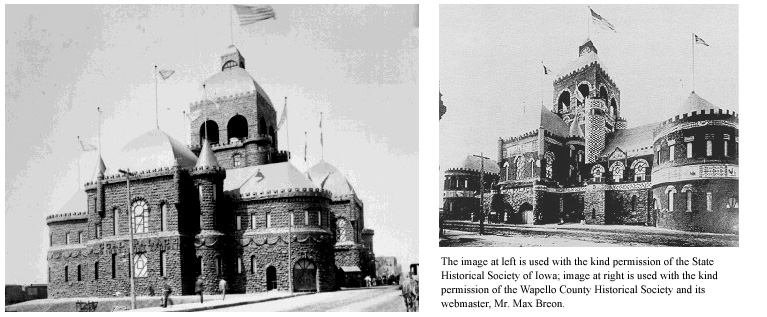
Like many modern stone buildings, the Coal Palace was stone-clad but not built of stone. Instead, its structural frame consisted of 800,000 feet of lumber. The building was 230 feet long and 130 feet wide, and its central tower reached 200 feet above ground. It had a dance floor, an auditorium, many exhibit halls, and a thirty-foot waterfall. Of the images above, the one at right shows a view from the far end of the street in the image on the left.
Coal is certainly not a common building stone. Coal is prone to oxidation, either quickly in a conflagration or slowly, leading to crumbling and collapse. The razing of the Coal Palace in 1891 was thus probably wise, and it's unlikely that it could have survived until today. The Coal Palace was probably the largest building ever built of coal, but it was not the only one: there are coal houses today in Middlesboro, Kentucky, and White Sulphur Springs, West Virginia.
Iowa was and still is a coal-producing state. Iowa's coal is of Pennsylvanian age (about 300 million years ago) and thus of the same age as the major coal deposits of the Appalachians. The Pennsylvanian was a time of repeated rises and drops in sea level, and as a result seas periodically flooded the U.S. midcontinent. In doing so, they made swamps in which plant matter accumulated as sediments that were lithified to form coal. In another Iowa connection to the Pennsylvanian, one of the world's leading scholars of those Pennsylvanian rises and falls of sea level is a University of Iowa professor, Dr. Philip H. Heckel.